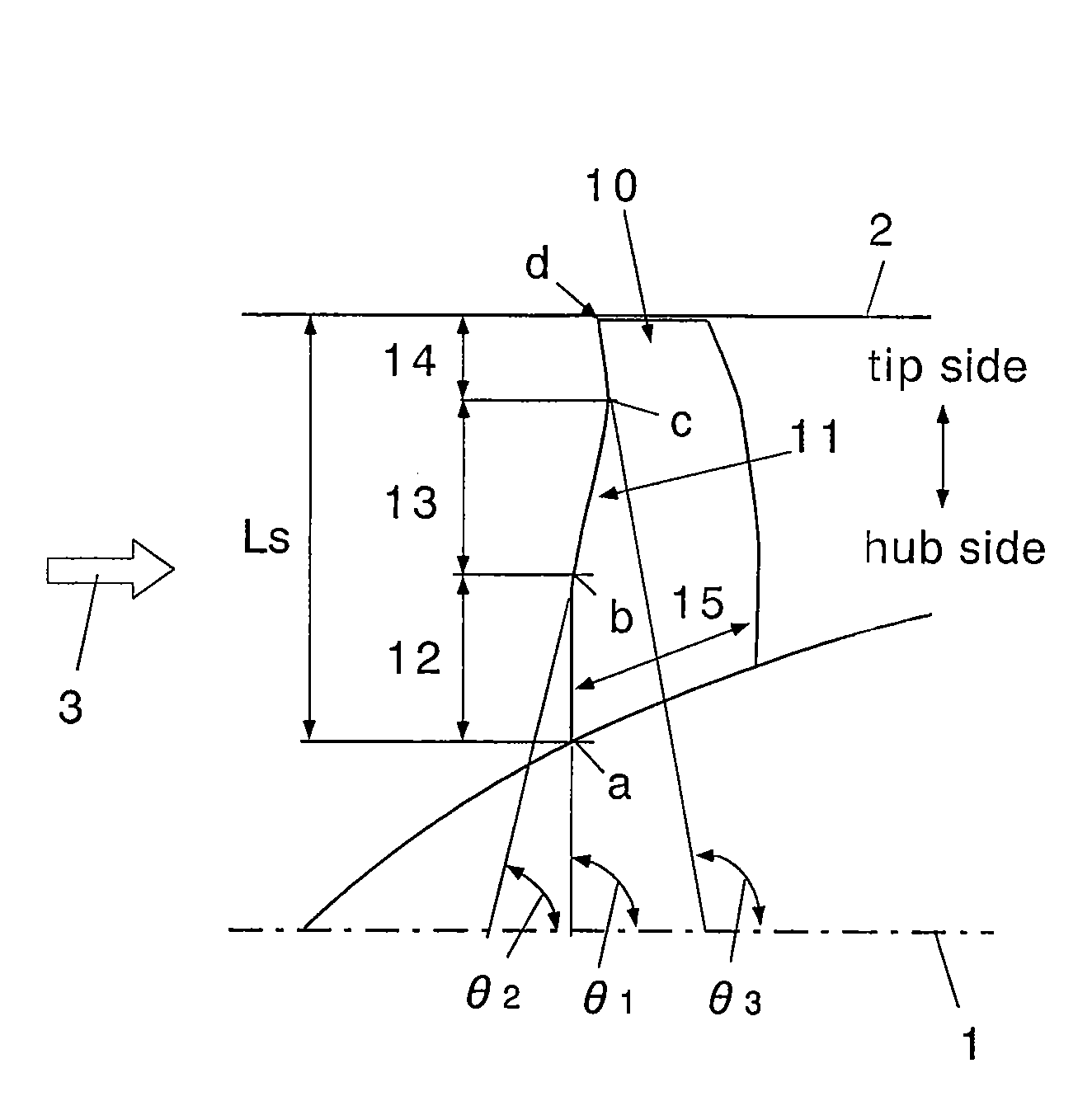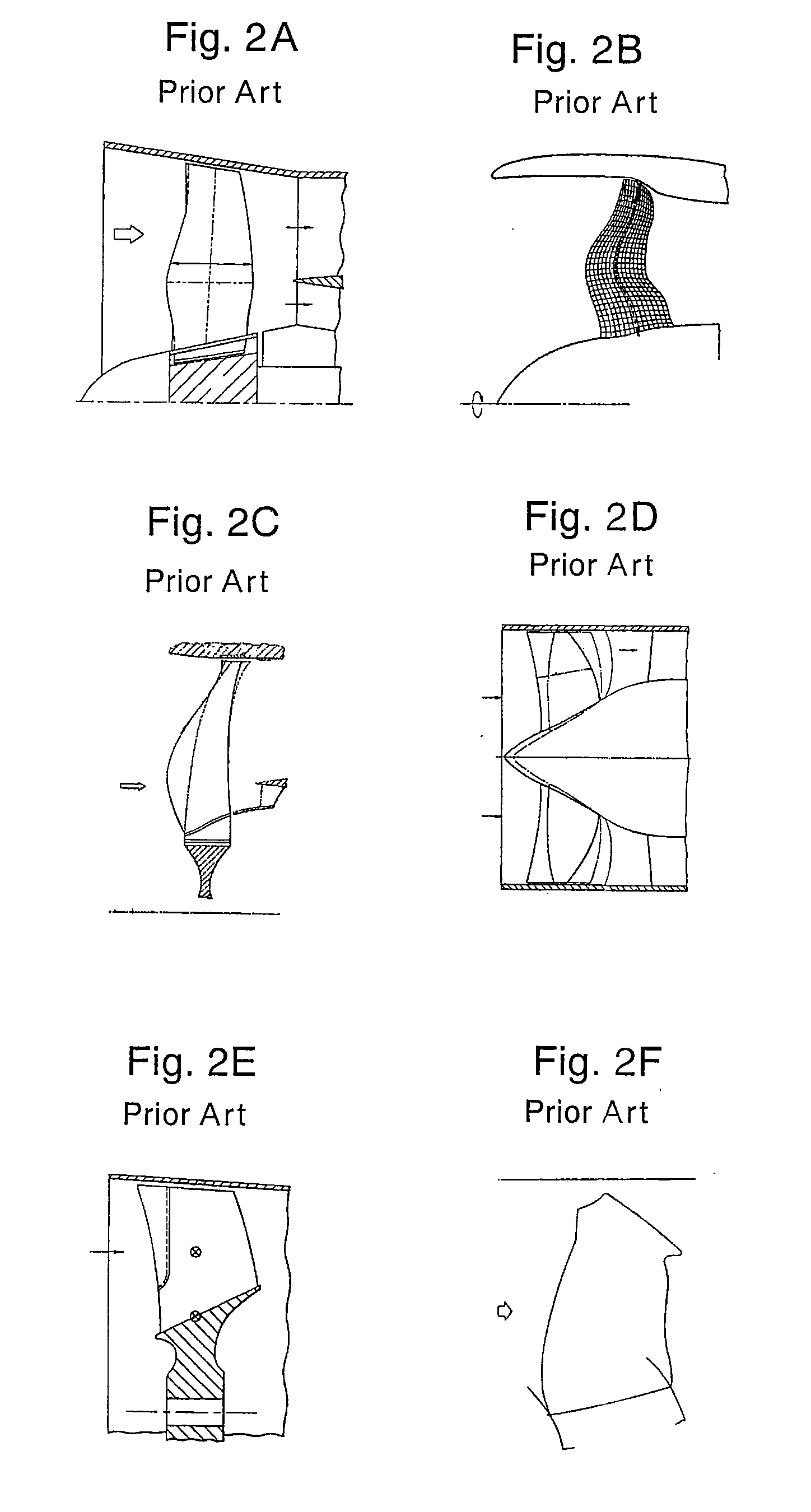Fan rotating blade for turbofan engine
a technology of rotating blades and turbofans, which is applied in the direction of machines/engines, mechanical equipment, liquid fuel engines, etc., can solve the problems of increased circumferential speed, increased engine weight, and increased so as to reduce the stress at the root of the leading edge part, increase the flow rate, and reduce the effect of stress
- Summary
- Abstract
- Description
- Claims
- Application Information
AI Technical Summary
Benefits of technology
Problems solved by technology
Method used
Image
Examples
Embodiment Construction
[0045]Hereinafter, a preferred embodiment of the invention will be described with reference to the drawings. Also, in the respective drawings, the same reference numerals are given to the same components and the repetitive description thereof will be omitted.
[0046]FIG. 3 is a configuration diagram showing a fan rotating blade for a turbofan engine according to the invention. In this drawing, Reference numeral 1 denotes an engine rotary shaft (fan rotary shaft), Reference numeral 2 denotes a casing inner diameter, and Reference numeral 3 denotes an intake air flow.
[0047]It is desirable that a fan rotating blade 10 according to the invention is a fan first-stage rotating blade, and a leading edge part 11 is formed by a vertical hub portion 12, a backward inclined mid-span portion 13, and a forward inclined tip portion 14.
[0048]The vertical hub portion 12 is positioned on the hub side so as to be substantially perpendicular to the fan rotary shaft 1.
[0049]In this example, it is desirab...
PUM
 Login to View More
Login to View More Abstract
Description
Claims
Application Information
 Login to View More
Login to View More - R&D
- Intellectual Property
- Life Sciences
- Materials
- Tech Scout
- Unparalleled Data Quality
- Higher Quality Content
- 60% Fewer Hallucinations
Browse by: Latest US Patents, China's latest patents, Technical Efficacy Thesaurus, Application Domain, Technology Topic, Popular Technical Reports.
© 2025 PatSnap. All rights reserved.Legal|Privacy policy|Modern Slavery Act Transparency Statement|Sitemap|About US| Contact US: help@patsnap.com



